- Home
- Lewis Carroll
Alice's Adventures in Wonderland and Through the Looking Glass (B&N) Page 4
Alice's Adventures in Wonderland and Through the Looking Glass (B&N) Read online
Page 4
From a Darwinian perspective, many creatures of Wonderland are both inedible and extremely rare. Yet they exist. They constitute a bestiary of related things, though their family lineages are murky. They inhabit the same world and dine at the same table, yet they are antithetical to community. They do not share their feelings, and this makes them likely to be forgotten. For Carroll, like most nineteenth-century probability experts, eccentricity is another word for deviance, opposed to the normal, and bad for reproduction. The identical twins Tweedledee and Tweedledum threaten to become the victims of a fratricide. Not surprisingly, when Alice sees them she wonders if they are alive. The same could be said of Wonderland and the world beyond the looking glass, which, like childhood and the life of a gnat, verge on expiration. Unlike a bored child, the White Rabbit is in a very big hurry, in a race with the watch he carries on his person. In a gesture of compassionate conservation, Carroll terminates Through the Looking-Glass with a manual of extinction, his unending desire couched as a memorial poem for Alice herself: “Long has paled that sunny sky: / Echos fade and memories die: / Autumn frosts have slain July” (p. 272).
Near the end of the books, Alice angrily calls quits to the pack of cards and pulls the tablecloth out from under the diners’ meal. Indeterminism creates a world where there is no end to worrying about what Alice was unable to consume, and the most non-consumable thing about ourselves is our own passions. What is to be done with them? Desire resembles a game not with subjects who reciprocate our feelings but with losers and winners. Both books end violently, with the upsetting of a table and of a pack of cards, acts that suggest the end of an unsuccessful game and the figurative death of Alice’s desires. So the final book ends—with a poem that signals Carroll’s farewell.
PROBABLE ENDINGS AND IMPROBABLE BEGINNINGS
“And if he left off dreaming about you, where do you suppose you’d be?”
“Where I am now, of course,” said Alice.
“Not you!” Tweedledee retorted contemptuously. “You’d be nowhere. Why, you’re only a sort of thing in his dream!”
“If that there King was to wake,” added Tweedledum, “you’d go out—bang!—just like a candle!” (p. 197)
Both Alice books begin with dullness, pass through fantasy and end with waking (back to dullness). Boredom is a part of the indeterminate stuff of this world, a kind of question that cannot be answered by our desires. The various animal and human-like creatures in Alice’s Adventures in Wonderland and Through the Looking-Glass are in the end difficult to locate in any real place. Yet Carroll fastidiously brackets each book to suggest that the vagaries of dreaming and nonsense occur within the boundaries of a book and the head of a sleeping child. Alice wakes to a world of dull reasonableness, which is to say that chance has yet to become the chief quality of the world out there, what the philosopher Ian Hacking terms “objective chance.” Yet for the child, curiosity, like love, is defined by boundlessness. Dullness without, chaos and wonder within—or is it the other way around?
Alice and Looking-Glass are nineteenth-century works; they regard disorder and chaos as problems to be tucked away in regressive moments of dreaming and remembering. And yet, as Ian Hacking points out, the problems of one century become the solutions of the next. The dangers of possibility and chaos in the nineteenth century become the immutable laws of chance and uncertainty in the twentieth. Determinism erodes throughout both books: The world becomes a place not where things happened but where fantastic things might have happened. But then, of course, looking at it from the nineteenth-century perspective of Alice’s looking glass, they might not have happened at all. Alice is unsure if it even was her dream.
The final chapter of Alice, “Alice’s Evidence,” ends with the Queen’s coercive command for “Sentence first—verdict afterwards” followed with Alice’s reply: “Stuff and nonsense!” (p. 140). The line between “stuff” and “nonsense” is not so clear, although Alice tries to make the distinction. Precisely at this moment the nonsense, after reaching an insufferable level, ends, and Alice awakens with her head in her sister’s lap. She tells her sister her dream, whereupon her sister dreams Alice’s dream. But this second dream is different from Alice’s, for it is a dream in which the dreamer is half awake and acknowledges that the dream cannot last forever and will “change to dull reality” (p. 143). Alice, her sister surmises, will wake and grow up into everyday reality, within which the dull and boring world no longer seems opposed to desires but must be reconciled to them. Earlier the extinct Dodo had solemnly called for “more energetic remedies” (p. 35), but clearly the time for such remedies has passed. Alice’s sister entertains one last image of Alice, another invention but more tempered than earlier ones: “Lastly, she pictured to herself how this same little sister of hers would, in the after-time, be herself a grown woman; and how she would keep, through all her riper years, the simple and loving heart of her childhood” (p. 144).
It is a mistake to read these books, as many critics have, as lessons in growing up or in mastering or coercing experience (particularly boredom), through play or other means. If anything, the books suggest what the reasonable Alice, at the end of the book, still doesn’t know. It is, after all, not Alice but her sister who sees in Alice’s waking a probable future that Alice has herself yet to experience. Mastery turns out to be a communal rather than solitary affair. Alice’s sister has a reminiscence of Alice the child before Alice has taken leave of childhood. Thus do inexorable probabilities creep in and replace the highly improbable creatures of Alice’s dream. The reader knows that Alice’s sister is probably right: Boredom and dull reality will return when Alice wakens and then grows into an adult. And yet a memory that is not yet a memory is a highly improbable event. What control over the things we remember will we ultimately have? What for Alice has been lost but not yet lost? Of course, we often seem to know something is lost before we lose it—and this feeling suffuses childhood and the adult’s recollection of what that childhood was, which is probably the only childhood he or she can have. Such is the nature of desire: One desires things that have yet to be and that are in some sense already lost to the moment of desire. When the Queen pricks her finger, Alice asks why she doesn’t scream. The Queen replies, “Why, I’ve done all the screaming already” (p. 206).
In a paradoxical way, the book suggests that one has desires in order to forget them and thus grow into the future rather than merely repeat one’s past. In the moments before Alice wakes, both books delineate unsatisfying and indeterminate chaos: In Through the Looking-Glass, the guests are being devoured by their foods; in Alice’s Adventures in Wonderland, the Queen orders Alice’s execution and a pack of cards flies upon poor Alice, who finally exclaims, reasoning backward as it were into a realm of diminishing possibilities: “You’re nothing but a pack of cards!” (p. 140). Here Alice reverses the logical argument of the earlier chapters, in which she (or something inside her) turned nothing into something. After this point, the story of Alice’s “real” life is set to unfold. This suggests that Alice is no longer trapped in someone else’s dream (of her). Like a good many children who are on the verge of not being children, Alice is learning forgetfulness, as a prelude to something (the future of one’s desires) that cannot be known with certitude. Childhood desires thus comprise a nonsense of a different order.
For Carroll, boredom still manages a moral impetus: It teaches the adult (Alice is an adult before her time) that nonsense is both possible and necessary; it also teaches the adult that nonsense is a regressive fiction that one wakes from and waking from, then mourns. For an adult, the nonsense of childhood is the nonsense of its loss. Competing necessities govern the end of each book, and they govern the strategies involved in regulating one’s desires, which also need to be forgotten so they can be retold. Only by forgetting childhood desires can a certain amount of sense be gained. But, of course, the absence of those desires has to be regulated too; perhaps boredom is a preemptive strike at desires we may never have. N
one of the games that Alice plays suggests mastery, a narrative thread, the end of conflict, the resolution of a misunderstanding, or a satisfying answer to the questions her desires pose. It is Alice’s sister who forgets for her, rather than Alice herself.
Of the two books, Through the Looking-Glass is the bleaker; it ends with a question, whereas Alice’s Adventures in Wonderland ends with a sister’s loving reminiscence, delivered in Wordsworthian fashion as a premature eulogy for a childhood not yet lost, a lost childhood whose losses were already being deferred, as it were, by a familial caretaker. One of the ways to learn to give up an unbearable personal fantasy (and Alice can barely bear hers) is to make it the subject of a story. But once that is done, a mystery ends and with it a part of desire. What story can be told to get desire back? Perhaps storytelling offers a clue to deferring desires for something that has not yet arrived. To speak is to speak, as Carroll does, of imaginary things. Alice’s Adventures in Wonderland is, after all, a story told by Carroll to children, and Alice in turn tells her sister her dream, another kind of story. At the close of both Alice books, the adult reader/listener again confronts Alice the child, someone on the verge of becoming someone else, someone the grown-up reader knows well, someone who is “loving and gentle . . . courteous to all, high or low . . . trustful, ready to accept the wildest impossibilities with all that utter trust that only dreamers know; and lastly, curious—wildly curious, and with the eager enjoyment of Life that comes only in the happy hours of childhood.” 19 Understanding desires turns out to be a communal rather than a solitary experience. For Alice’s dream language to make sense, Alice must escape it first. The easiest way to escape is to make it the subject of a sharing; the language of the dream must be given to someone else.
Like Alice’s sister’s act of remembering, the reader’s recognition is a repetition with a difference, because the repetition involves retelling. Repetition is about eternity and stopping time; repetition with a difference presupposes change and time passing. Carroll tellingly pairs impossibility with curiosity—even if such impossibilities are something not entirely forgotten. The adult is a child whose childhood desires are something she hasn’t learned to forget. Such acts of forgetting, like acts of mastery, turn out to be equally contingent as the futures the child hasn’t yet had. The problems Alice confronts, for all their seeming reality, are the stuff of fantasy, but the fantasy may be merely a screen for banal fears and anxieties the adult world generates: how to put on shoes when your feet are too far off; how to get into a door that is too small; how to reach a golden key; how to get out of a pool of one’s own tears? In this sense the nonsensical obstacles of childhood, the things known as fantasies, become the more reasonable problems of adulthood, but they remain problems to be solved nonetheless. If the problems we have never go away and are in some sense insoluble—that is, unforgettable—what moral stories might we tell as consolation? One of the things the adult imagines is, of course, an adulthood that never quite arrived to take the place of Wonderland.
Tan Lin is a writer, artist, and critic. He is the author of two books of poetry, Lotion Bullwhip Giraffe, and BlipSoak01. He received his Ph.D. from Columbia University and teaches creative writing at New Jersey City University.
NOTES TO THE INTRODUCTION
1 Adam Phillips, The Beast in the Nursery (New York: Basic Books, 1998), pp. 134-135.
2 Mark Haworth-Booth, “The Photographic Moment of Lewis Carroll,” in Morton N. Cohen, ed., Reflections in a Looking-Glass: A Centennial Celebration of Lewis Carroll, Photographer (New York: Aperture, 1998), p. 127.
3 Derek Hudson, Lewis Carroll: An Illustrated Biography (London: Constable, 1976), p. 114.
4 Hudson, p. 114.
5 Hudson, p. 152.
6 Walter Benjamin, The Arcades Project, translated by Howard Eiland and Kevin McLaughlin (Cambridge, MA: Harvard University Press, 1999), p. 105.
7 Adam Phillips, On Kissing, Tickling, and Being Bored (Cambridge, MA: Harvard University Press, 1993), p. 78.
8 Adam Phillips, Terrors and Experts (Cambridge, MA: Harvard University Press, 1996), p. 1.
9 Phillips, Terrors and Experts, p. 1.
10 Adam Phillips, Promises Promises (London: Faber, 2000), p. 175.
11 Elizabeth Sewell, “The Balance of Brillig,” in Alice in Wonderland, edited by Donald J. Gray, second edition (New York: Norton, 1992), p. 384.
12 Sewell, p. 384.
13 Gregory Ulmer, “The Puncept in Grammatology,” in On Puns, edited by Jonathan Culler (Oxford: Blackwell, 1988), p. 176.
14 Martin Gardner, The Annotated Alice (New York: Clarkson N. Potter, 1960), p. 109.
15 Adam Phillips, On Flirtation (Cambridge, MA: Harvard University Press, 1994), p. xx.
16 Phillips, On Flirtation, p. xx.
17 Gardner, p. 191.
18 Ian Hacking, The Taming of Chance (New York: Cambridge University Press, 1990), p. 14.
19 Hudson, p. 156.
Alice’s Adventures in Wonderland
PREFACE
To The
EIGHTY-SIXTH THOUSAND
Enquiries have been so often addressed to me, as to whether any answer to the Hatter’s Riddle (see p. 79) can be imagined, that I may as well put on record here what seems to me to be a fairly appropriate answer, viz. “Because it can produce a few notes, though they are very flat; and it is nevar put with the wrong end in front!” This, however, is merely an after-thought: the Riddle, as originally invented, had no answer at all.
All in the golden afternoon
Full leisurely we glide;
For both our oars, with little skill,
By little arms are plied,
While little hands make vain pretence
Our wanderings to guide.
Ah, cruel Three! In such an hour,
Beneath such dreamy weather,
To beg a tale of breath too weak
To stir the tiniest feather!
Yet what can one poor voice avail
Against three tongues together?
Imperious Prima flashes forth
Her edict “to begin it”:
In gentler tones Secunda hopes
“There will be nonsense in it!”
While Tertia interrupts the tale
Not MORE than once a minute.
Anon, to sudden silence won,
In fancy they pursue
The dream-child moving through a land
Of wonders wild and new,
In friendly chat with bird or beast—
And half believe it true.
And ever, as the story drained
The wells of fancy dry,
And faintly strove that weary one
To put the subject by,
“The rest next time—” “It IS next time!”
The happy voices cry.
Thus grew the tale of Wonderland:
Thus slowly, one by one,
Its quaint events were hammered out—
And now the tale is done,
And home we steer, a merry crew,
Beneath the setting sun.
Alice! A childish story take,
And, with a gentle hand,
Lay it where Childhood’s dreams are twined
In Memory’s mystic band,
Like pilgrim’s wither’d wreath of flowers
Pluck’d in a far-off land.
CHRISTMAS-GREETINGS.
[FROM A FAIRY TO A CHILD.]
Lady dear, if Fairies may
For a moment lay aside
Cunning tricks and elfish play,
’T is at happy Christmas-tide.
We have heard the children say—
Gentle children, whom we love—
Long ago, on Christmas Day,
Came a message from above.
Still, as Christmas-tide comes round,
They remember it again—
Echo still the joyful sound
“Peace on earth, good-will to men!”
Yet the hearts must c
hildlike be
Where such heavenly guests abide;
Unto children, in their glee,
All the year is Christmas-tide!
Thus, forgetting tricks and play
For a moment, Lady dear,
We would wish you, if we may,
Merry Christmas, glad New Year!
Christmas, 1867.
I
Down the Rabbit Hole
Alice was beginning to get very tired of sitting by her sister on the bank, and of having nothing to do; once or twice she had peeped into the book her sister was reading, but it had no pictures or conversations in it, “and what is the use of a book,” thought Alice, “without pictures or conversations?”
So she was considering, in her own mind (as well as she could, for the hot day made her feel very sleepy and stupid), whether the pleasure of making a daisy-chain would be worth the trouble of getting up and picking the daisies, when suddenly a White Rabbit with pink eyes ran close by her.
There was nothing so very remarkable in that; nor did Alice think it so very much out of the way to hear the Rabbit say to itself “Oh dear! Oh dear! I shall be too late!” (when she thought it over afterwards, it occurred to her that she ought to have wondered at this, but at the time it all seemed quite natural); but, when the Rabbit actually took a watch out of its waistcoat-pocket, and looked at it, and then hurried on, Alice started to her feet, for it flashed across her mind that she had never before seen a rabbit with either a waistcoat-pocket, or a watch to take out of it, and, burning with curiosity, she ran across the field after it, and was just in time to see it pop down a large rabbit-hole under the hedge.

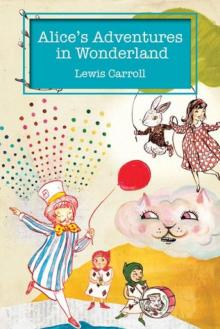 Alice's Adventures in Wonderland & Through the Looking-Glass
Alice's Adventures in Wonderland & Through the Looking-Glass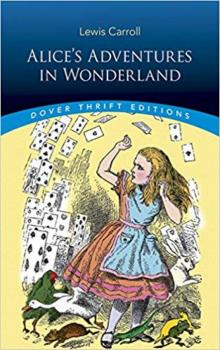 Alice's Adventures in Wonderland
Alice's Adventures in Wonderland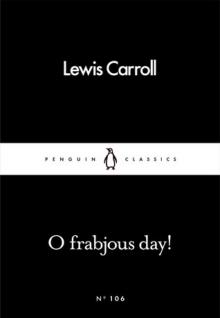 O Frabjous Day!
O Frabjous Day!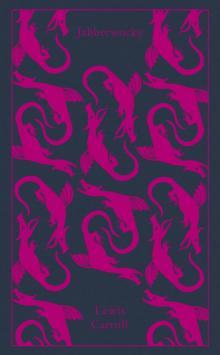 Jabberwocky and Other Nonsense
Jabberwocky and Other Nonsense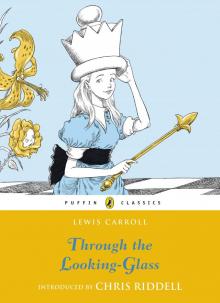 Through the Looking-Glass and What Alice Found There
Through the Looking-Glass and What Alice Found There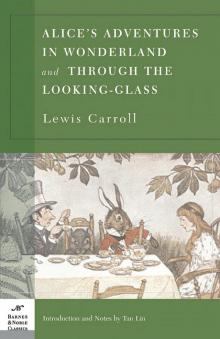 Alice's Adventures in Wonderland and Through the Looking Glass (B&N)
Alice's Adventures in Wonderland and Through the Looking Glass (B&N)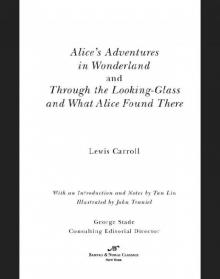 Alice's Adventures in Wonderland and Through the Looking Glass (Barnes & Noble Cla
Alice's Adventures in Wonderland and Through the Looking Glass (Barnes & Noble Cla The hunting of the Snark
The hunting of the Snark The Complete Alice in Wonderland (Wonderland Imprints Master Editions)
The Complete Alice in Wonderland (Wonderland Imprints Master Editions) Alice in Wonderland: The Vampire Slayer
Alice in Wonderland: The Vampire Slayer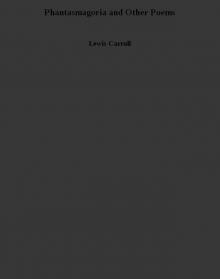 Phantasmagoria and Other Poems
Phantasmagoria and Other Poems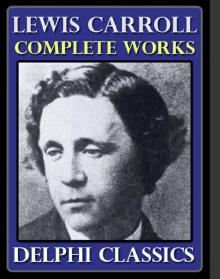 Complete Works of Lewis Carroll
Complete Works of Lewis Carroll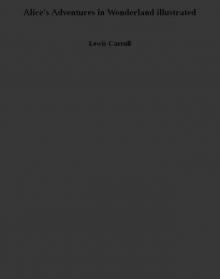 Alice's Adventures in Wonderland illustrated
Alice's Adventures in Wonderland illustrated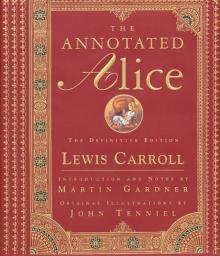 The Annotated Alice: The Definitive Edition (The Annotated Books)
The Annotated Alice: The Definitive Edition (The Annotated Books)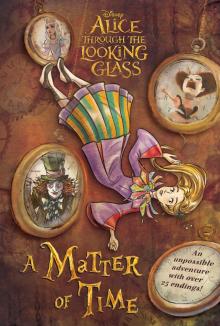 Through the Looking Glass
Through the Looking Glass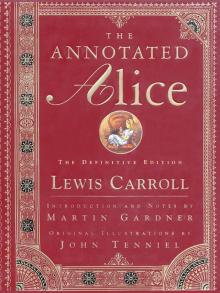 The Annotated Alice
The Annotated Alice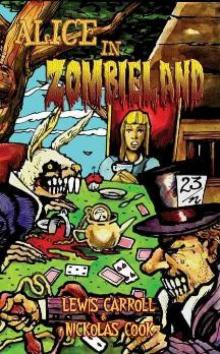 Alice in Zombieland
Alice in Zombieland